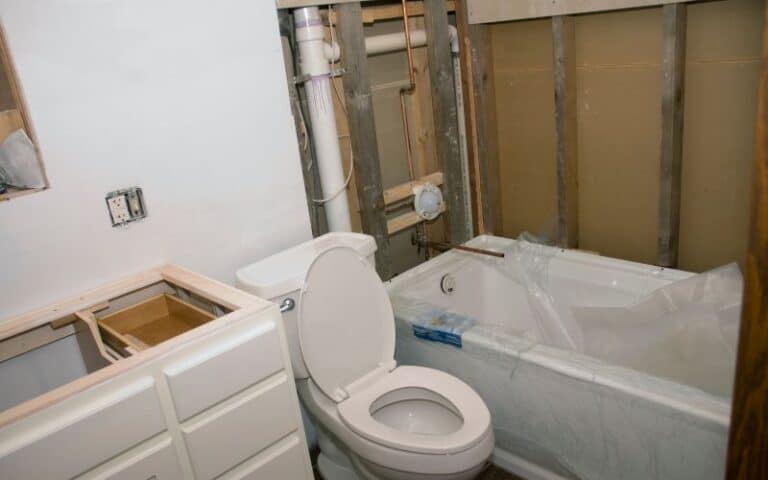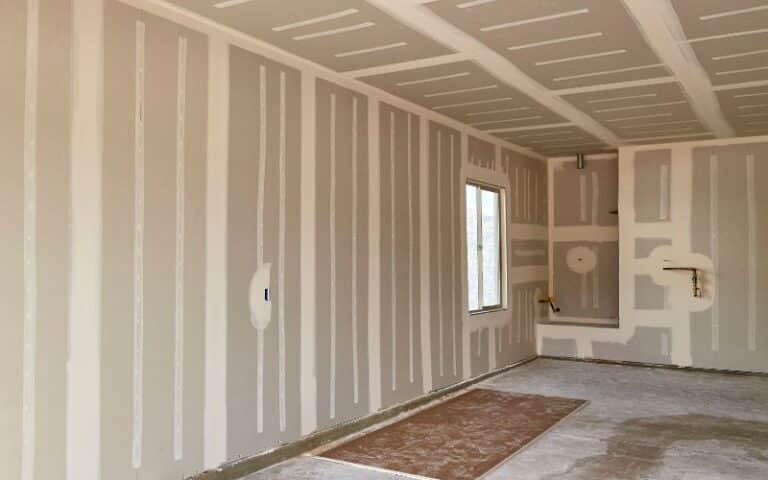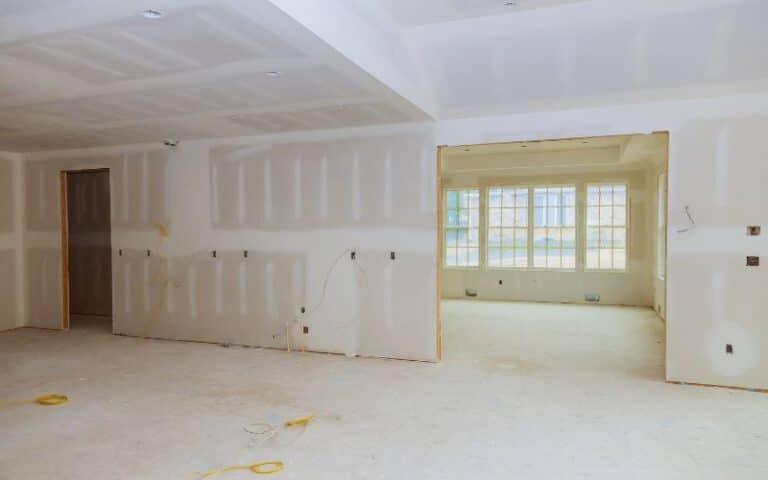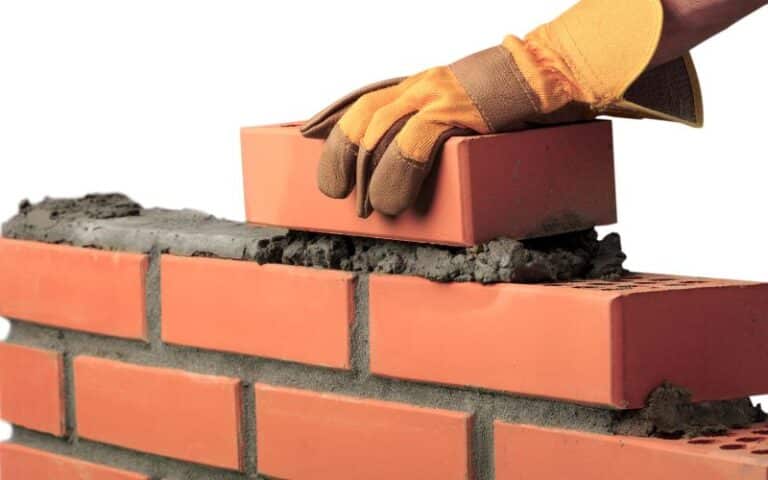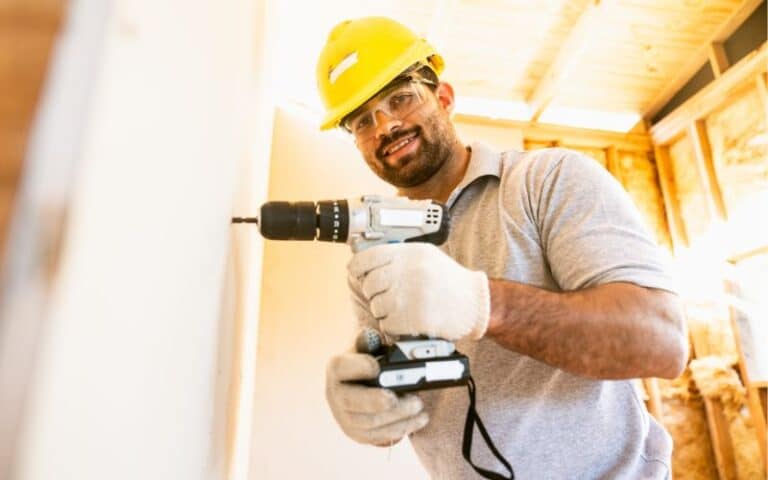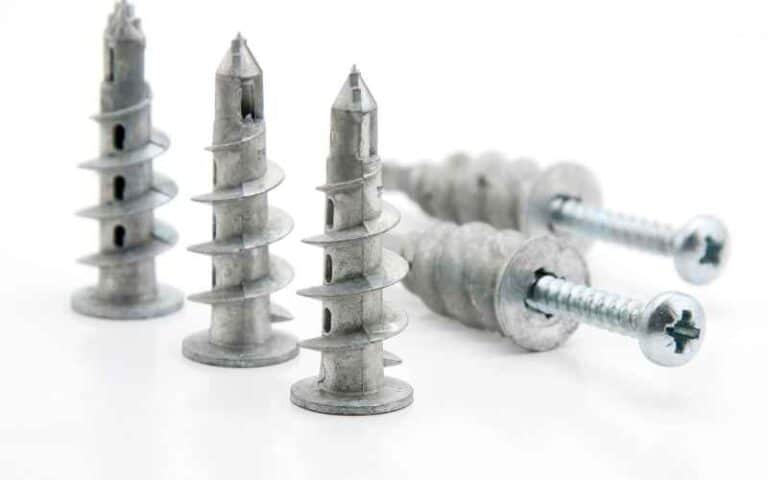Drywall is an important part of construction and renovation projects. It provides a finished look to walls and ceilings.
It’s a popular choice for residential and commercial buildings due to its affordability and ease of installation.
The rate at which drywall burns is a significant factor for you to consider when designing and constructing buildings.
So it’s necessary to know the answer to the question: how fast does drywall burn?
Not very fast, and that’s because drywall materials (primarily gypsum) are relatively non-combustible, making them very difficult to burn. The materials make them fire-resistant to an extent and will start to get affected when the fire temperature reaches 176°F. This material most likely catches fire when the temperature gets to 480°F. The drywall paper will burn, and the fire off.
In this article, I will explain whether drywall is fireproof, if it can burn, and how fast it burns. I’ll also explain how hot it has to get before burning.
By the end, you’ll know if your drywall can burn, at what temperature it burns, and how quickly it does.
Ready for a Drywall Quiz?
How Quickly Does Drywall Burn?
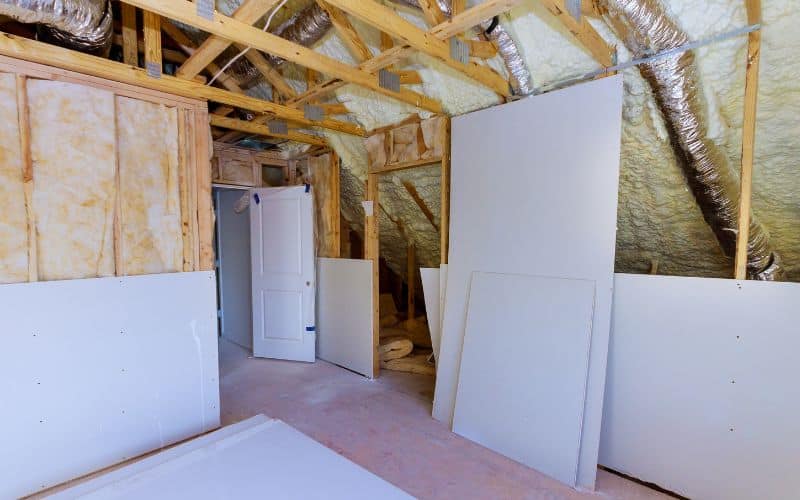
The drywall doesn’t burn quickly. That is because the burning of drywall depends on certain conditions, like the temperature of the fire, the room’s ventilation, etc.
Also, another factor that affects how fast your drywall burns is the type of drywall itself. Some drywalls are more fire-resistant and can hold up much longer than others.
Drywall’s primary material is gypsum is a combustible mineral and difficult to burn. So it won’t burn if the temperature isn’t up to a certain degree.
As fire-resistant as your drywall material is, once heated to about 176°F, it will start disintegrating, and the paper will come off the drywall.
However, your drywall will catch fire when the temperature increases to 480°F. When this happens, the drywall will release toxic fumes into the air.
During this burning process, the gypsum in the drywall evaporates water, so the fire won’t burn quickly for as long as it can.
The amount of time the drywall can withstand the fire depends on the type of drywall you have. After that, it disintegrates into a powdery substance.
The table below shows the drywall with a fire rating and fire resistance time.
| Drywall Type | Fire Rating |
|---|---|
| Type X | 1 hour |
| Type C | 2-4 hours |
Your drywall’s fire rating varies depending on its thickness and the presence of additional fire-resistant materials.
Generally, drywall is slow to ignite but can accelerate once started. Under certain conditions, drywall can ignite and burn rapidly.
The severity of the fire will depend on the amount of combustible material in the room and the amount of oxygen available.
Is All Drywall Fireproof?
No, not all drywall is fireproof. While some manufacturers advertise their products as fire-resistant, these boards are typically treated with special chemicals to resist burning.
Most standard drywall is a gypsum core sandwiched between two layers of heavy paper. That makes it a combustible material that can burn in certain circumstances.
You should know that we have different drywalls. Some are more fire-resistant than others.
For instance, regular drywall doesn’t have any additional fire rating, just the normal fire resistance provided by the gypsum.
Also, drywalls like type X and C contain special additives and are more fire-resistant. Although, these drywalls aren’t without limitations and might not withstand prolonged fire exposure.
It’s necessary to understand that even fire-resistant drywall won’t prevent a fire from spreading throughout your home or commercial building.
Their manufacturers designed them to help slow the spread of the flames. That way, the structure has a better chance of staying intact, and people have time to evacuate safely.
We often use fire-resistant drywall in commercial or apartment buildings and multi-family dwellings, where fire risk is high because of the number of occupants.
You can also use it where hazardous materials are present, such as flammable liquids or electrical wiring that may ignite.
In essence, there is no complete fireproof drywall. The only thing is the rate at which they can withstand fire differs.
If you’re concerned with your home’s fire safety, contact a professional to help install the drywall.
How Hot Can Drywall Get Before It Burns?
The exact temperature at which drywall begins to burn depends on the type of drywall used.
Certain types of drywall are rated to resist temperatures up to 176°F before the fire starts affecting them and signs of damage start to show.
In this case, the drywall does not burn, but the heat causes it to degrade over time and lose its structural integrity.
If not quickly noticed, it can lead to a dangerous condition, as there might be structural instability in the wall or ceiling.
Therefore, when using drywall in your home, it is best to choose a fire-resistant product.
Installing smoke detectors and taking other precautions to prevent fires can also help keep your family safe in cases of emergency.
However, if you increase the temperature of the fire to about 480°F, the drywall will start burning, and the flame can spread rapidly.
Finally, always remember to practice proper fire safety protocol in case of a fire.
Make sure everyone knows how to evacuate safely, have an escape plan ready, and never attempt to fight the fire yourself unless necessary.
If you follow these simple steps, you can reduce the risk of serious harm from drywall fires.
Will Drywall Burn in a Fire Pit?
Yes, drywall can burn in a fire pit. However, it’s important to note that the drywall’s presence in a fire pit will impact the overall burning time and fire intensity.
The flame from a fire pit is much hotter than the flames from an indoor fireplace, so the drywall will burn faster in a fire pit.
When you place the drywall in a fire pit, the gypsum core of the board can quickly become hot enough to ignite.
Drywall may also contain other flammable materials, such as paper, wood, and adhesives which can easily catch fire in high temperatures.
If you’re using drywall in a fire pit, ensure you keep an eye on it and move it away from the flames if necessary.
When burning, the drywall produces sulfur dioxide gas that harms humans when you inhale it.
The materials in the drywall make it easier for you to burn it in a fire pit. The drywall components are easily broken down and ignited by flames, releasing gas into the air.
The gas released by the drywall then mixes with oxygen forming carbon dioxide and water vapor. Due to this, the drywall’s components will burn completely, turning into ash.
When burning drywall in a fire pit, take precautions, so the fire does not go out of hand.
Here are some precautions when burning drywall in a fire pit:
- Use heat-resistant materials like bricks and fire-retardant materials like concrete or ceramic.
- Ensure the fire pit position shouldn’t too close to other combustible materials to avoid an unexpected wildfire.
- Maintain a safe distance between the fire and the drywall so it doesn’t ignite.
- Consider the size of the fire pit when burning drywall. A large fire will create more heat and can cause the drywall to burn faster, while a small fire may not generate enough heat to ignite it.
- You should ensure that you contain the fire properly, so the drywall does not catch fire.
Before burning drywall in a fire pit, take all necessary safety measures to reduce the risk of an unexpected and uncontrolled fire.
In conclusion, drywall can burn in a fire pit, but because it’s flammable, it’s best not to use it in fire pits.
How Does Heat Damage Drywall?
When you expose drywall to heat, it can become severely damaged and can even catch fire.
Heat causes the gypsum in the drywall to break down and lose its structural integrity.
That makes it brittle and prone to cracking and crumbling. In extreme cases, heat can cause the drywall to burst into flames.
Treat fire in your drywall with a fire-resistant compound such as a gypsum board or fire-rated drywall to resist fire.
Heat can also cause the drywall to warp and bulge due to the moisture content within the wall cavity.
As the drywall absorbs moisture from the air, the wood framing behind the drywall can swell and cause the drywall to bow outward.
That can cause permanent damage to the drywall and may require repair or replacement.
Properly insulate your drywall to protect it from heat damage, also keep it away from direct heat sources such as radiators, heaters, etc.
It is also necessary to keep the drywall dry by preventing moisture from entering the wall cavity.
Regularly inspect your drywall for signs of heat damage, such as warping, cracking, or bubbling paint.
If you notice these signs, have a professional inspect your drywall and replace any damaged sections.

